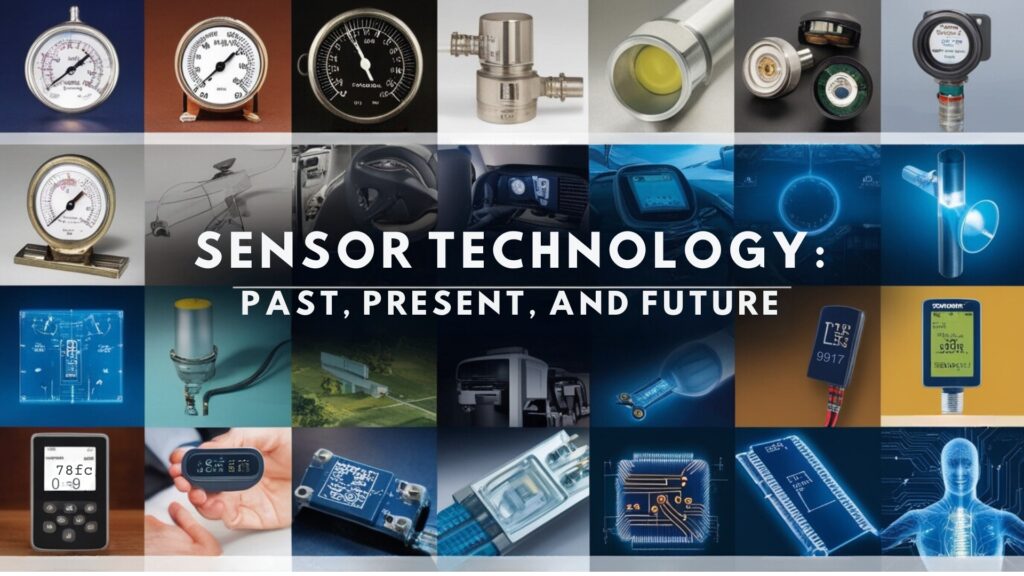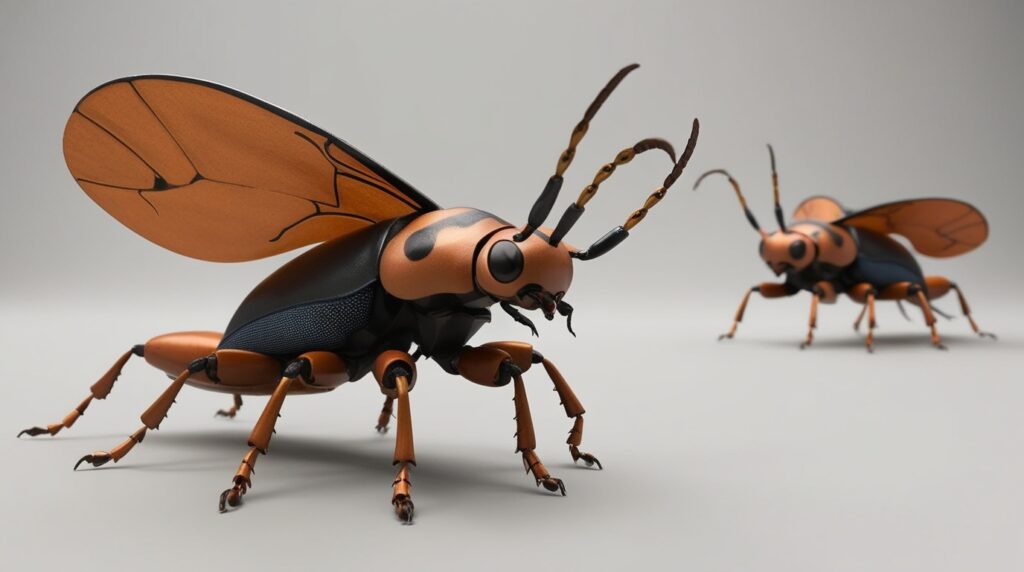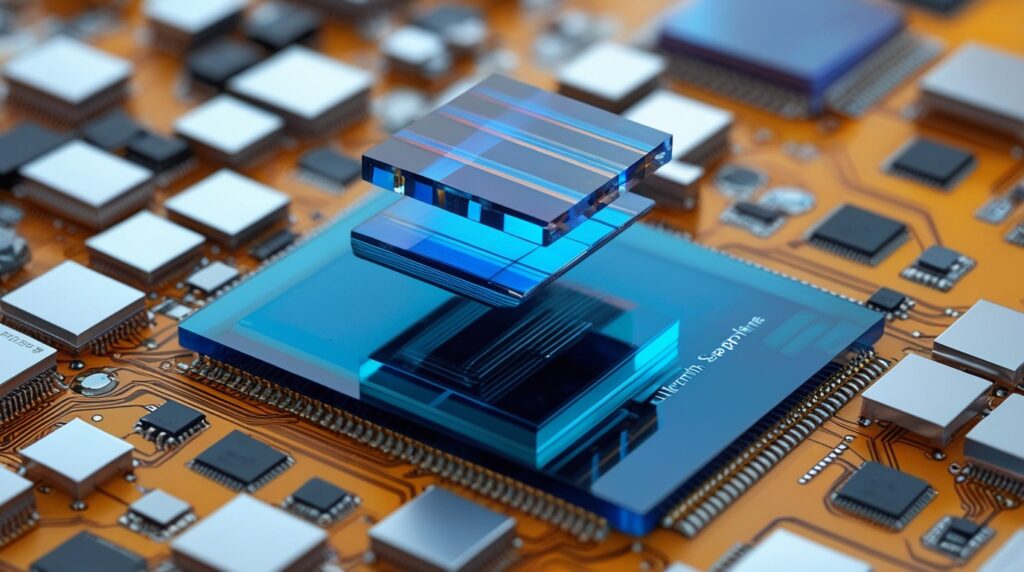
Introduction
Sensor Technology Past, Present, and Future Sensor technology encompasses a broad range of devices that detect and measure physical quantities such as temperature, pressure, and light, converting these measurements into electrical signals for further processing. The historical development of sensor technology traces its origins to the 17th century, with the invention of rudimentary instruments like thermometers, progressing significantly through the 19th and 20th centuries to encompass advanced applications in various fields including healthcare, automotive, and environmental monitoring.
Notable advancements include the emergence of remote sensing technologies in the late 19th century, exemplified by early aerial photography, and the transformative impact of the transistor in the mid-20th century, which enabled the miniaturization of sensor components. The concept of the Internet of Things (IoT), introduced in the late 1990s, further revolutionized sensor applications, leading to the development of smarter, interconnected devices capable of real-time data collection and analysis.
Today, sensor technology plays a pivotal role in critical sectors such as telemedicine, autonomous vehicles, and smart homes. The rise of Intelligent Wearable Medical Devices (IWMDs) and the integration of sensors in automotive systems are prime examples of how this technology enhances operational efficiency and user experience. However, the rapid evolution of sensor technology also raises significant challenges, including security and privacy concerns, data management issues, and production costs that can hinder widespread adoption.
Looking ahead, the future of sensor technology is marked by promising trends such as nanotechnology integration, AI-driven systems, and sustainable innovations aimed at addressing environmental challenges. As these advancements unfold, sensors are expected to play an increasingly crucial role in shaping the future of industries and improving quality of life on a global scale.
Historical Development
The historical development of sensor technology spans several centuries, evolving from rudimentary devices to sophisticated systems integral to modern applications.
Early Beginnings
The origins of sensor technology can be traced back to the 17th century with the invention of basic thermometers, which functioned as primitive temperature sensors. The 19th century saw further advancements with the creation of early pressure sensors and light sensors that could detect variations in environmental conditions.
Aerial Photography and Remote Sensing
The late 19th century marked a significant milestone in the development of remote sensing technologies. In 1858, French photographer Gaspard-Félix Tournachon, also known as Nadar, captured the first aerial photograph from a hot-air balloon over Paris, laying the groundwork for aerial photography’s use in mapping and surveying. This was further advanced in 1886 when a camera was affixed to a balloon for capturing images, thus expanding the utility of aerial photography beyond artistic purposes to scientific applications.
During World War I and II, military forces harnessed aerial photography extensively for reconnaissance. The post-war period witnessed a shift towards civilian applications, culminating in the launch of the first civilian Earth-observing satellite, TIROS-1, in 1960. This satellite was pivotal in advancing the understanding of Earth’s land, oceans, and atmosphere, leading to the launch of the first Landsat satellite in 1972, which provided continuous coverage of the Earth.
The Birth of Modern Sensors
The 20th century heralded an era of rapid sensor innovation, significantly influenced by technological advancements. The invention of the transistor in 1947 revolutionized electronics by enabling the miniaturization of components, allowing for the creation of compact and power-efficient sensors. Before transistors, vacuum tubes were the standard, but their bulkiness and high power consumption limited technological progress. By the 1990s, the concept of connecting devices to the internet emerged, coining the term “Internet of Things” (IoT) in 1999. This development propelled the evolution of wireless sensors, which became smaller and more sophisticated, facilitating enhanced connectivity and data exchange across various applications.
Contemporary Advances and Future Trends
Today, sensor technology underpins critical functions across multiple sectors, including healthcare, environmental monitoring, and consumer electronics. The integration of sensors with smart devices facilitates real-time data collection and analysis, driving automation and enhancing operational efficiency. Looking ahead, the sensor technology landscape is poised for significant transformation.
Emerging trends suggest the development of smarter sensors powered by artificial intelligence, unprecedented resolutions at micro and nanoscales, and innovative applications such as electronic skin and brain-computer interfaces. As these advancements unfold, sensor technology is expected to play a pivotal role in shaping the future of various industries.
Current Applications
Automotive Industry
Sensor technology is becoming increasingly crucial in the automotive sector, especially as vehicles transition from mechanical and analog systems to digital and electrical ones. Modern vehicles utilize an array of sensors to feed data to the Engine Control Unit (ECU), which governs various functions, including acceleration and safety measures through Advanced Driver Assistance Systems (ADAS). As cars move toward higher levels of autonomy, from SAE Level IV (semi-autonomous) to Level V (fully autonomous), the reliance on these sensors for real-time decision-making will escalate significantly. The types of sensors employed include lidar, radar, and high-definition cameras, all of which are integral for object detection and navigation.
Wearable Technology in Healthcare
Recent advancements in flexible electronics have led to the emergence of Intelligent Wearable Medical Devices (IWMDs), which enable continuous health monitoring and real-time diagnostics. These devices facilitate personalized healthcare by tracking physiological metrics and delivering therapeutic agents on demand, thus advancing the field of precision medicine. Current wearable technologies encompass a range of applications, from fitness trackers to smartwatches, and are designed to be more comfortable and functional, incorporating features such as flexibility and self-healing capabilities.
Smart Home Integration
With the introduction of interoperability standards like Matter, the integration of sensor technology into smart homes has gained momentum. This framework allows devices from different manufacturers to communicate seamlessly, enhancing user experience and operational efficiency. For instance, the SwitchBot Hub 2 has been designed to support Matter, illustrating how traditional hubs are being upgraded to accommodate evolving smart home technologies. This shift signifies a move toward more cohesive ecosystems where various smart devices can work together harmoniously.
Telemedicine and Remote Monitoring
The Internet of Things (IoT) has revolutionized telemedicine by enabling real-time patient monitoring through various sensor-based devices. These sensors can provide critical health data, facilitating remote consultations and treatment plans that reach patients globally. Applications extend to both inpatient and outpatient settings, employing wireless technologies to monitor patients’ health dynamically and deliver timely interventions. The integration of sensor technology in healthcare is proving essential for improving patient outcomes and making healthcare more accessible.
Types of Sensors
Overview of Sensor Technologies
Sensors are devices designed to detect and measure specific physical quantities, such as light, sound, temperature, and pressure, converting these measurements into electrical signals for further processing. They play a critical role across various domains, including industrial electronics, healthcare, and consumer devices. Sensors can be categorized into various types based on the physical phenomena they sense or the technologies they employ.
Categories of Sensors
Physical Sensors
Physical sensors are capable of measuring parameters such as temperature, pressure, and motion.
- MEMS Sensors: Micro-electromechanical systems (MEMS) sensors, such as accelerometers and gyroscopes, are widely used in wearable electronics due to their small size and low power consumption. These sensors are crucial for applications that require real-time data collection, such as fitness tracking and navigation.
- Analog Sensors: Devices like potentiometers and force-sensing resistors fall under this category and are used in diverse applications, from manufacturing to aerospace.
Chemical Sensors
Chemical sensors are designed to detect specific chemical components or variations in chemical properties.
- Electrochemical Sensors: Commonly used for monitoring pH levels in fluids, these sensors are essential in environmental and health monitoring applications.
- Wearable Chemical Sensors: These sensors can analyze biochemical markers through bodily fluids, enabling health monitoring and disease management.
Smart Sensors
Smart sensors incorporate advanced functionalities, allowing them to autonomously process and analyze data.
- Integrated Systems: Smart sensors combine sensing capabilities with processing power, communication modules, and algorithms to provide self-learning and self-diagnosing features. This enables applications in industrial automation, home automation, and smart health monitoring.
- IoT Integration: As part of the Internet of Things (IoT), smart sensors can communicate with other devices, creating interconnected systems that enhance automation and efficiency across various sectors, including smart homes and smart cities.
Applications of Sensors
The applications of sensors are vast and span multiple industries. In the healthcare sector, wearable sensors can monitor vital signs, while in agriculture, sensors can measure soil moisture levels to optimize irrigation practices. In industrial environments, smart sensors can improve operational efficiencies by providing real-time data on machinery and environmental conditions, contributing to the Industry 4.0 revolution.
Future Trends
The future of sensor technology is marked by rapid advancements and innovative applications that are set to redefine multiple industries and enhance quality of life. By 2030, we can expect significant progress in areas such as precision, power efficiency, quantum integration, biocompatibility, and AI-driven sensor networks, which will facilitate groundbreaking innovations across various sectors.
Automotive Innovations
In the automotive industry, sensor technology is integral to the evolution of mobility solutions. Vehicles are anticipated to become increasingly self-aware, equipped with interconnected systems that not only enhance functionality but also enable new business models. The integration of hundreds of Internet-connected engine control units (ECUs) and sensors will allow for the collection and analysis of vast amounts of data, providing insights that will inform decision-making and operational efficiency.
Industry 4.0 and IoT
The Fourth Industrial Revolution, often referred to as Industry 4.0, will heavily influence the future of sensor technology. With the automation of factories and the implementation of the Internet of Things (IoT), industrial sensors will achieve higher levels of accuracy and consistency. This advancement will enable complex tasks such as picking, placing, labeling, and printing to be executed at enhanced production rates, thus reducing waste and improving quality control.
Furthermore, the demand for intelligent connectivity will propel the development of advanced sensing technologies, contributing to the realization of autonomous systems in transportation and beyond. The Internet of Vehicles (IoV) and the Internet of Energy (IoE) are expected to emerge as key enablers of autonomous driving scenarios, embedding cognition and autonomous functions into vehicles.
Nanotechnology Integration
Nanotechnology is poised to revolutionize sensor applications by enabling the creation of nanosensors that operate at the atomic and molecular levels. These nano-enabled sensors will have profound implications across various fields, including transportation, healthcare, and environmental monitoring. For example, nanosensors may be utilized for chemical detection in various settings, including medical diagnostics and safety applications.
Sustainable Solutions
Lastly, the increasing focus on sustainability will drive innovations in sensor technology aimed at environmental protection and resource management. Digital technologies such as edge computing, AI, and advanced wireless connectivity will support initiatives related to climate change and contribute to the development of sustainable electronic components for future vehicles and other applications.
Challenges and Limitations
The deployment of sensor technologies, particularly within the framework of the Internet of Things (IoT), faces numerous challenges and limitations that hinder their effectiveness and widespread adoption.
Security and Privacy Concerns
As sensors become more integrated into the IoT ecosystem, security and privacy challenges arise. The physical vulnerability of these devices makes them targets for unauthorized access, leading to potential data breaches or manipulation. Common security threats include cloning of firmware and unauthorized signal manipulation, which can have severe consequences in critical applications, such as smart home systems or industrial automation.
Data Management and Calibration
One significant challenge lies in the management and calibration of sensor data. Sensors can produce vast amounts of data, and the calibration process is critical to ensure accurate readings. While some sensors may utilize look-up tables for calibration, this requires substantial memory capacity to store correction points due to the high volume of data generated during operations. Alternatively, interpolation methods can be employed, which may mitigate memory concerns by using smaller matrices of correction points.
Sensor Errors and Environmental Sensitivity
Sensor performance can be significantly affected by various forms of error, including dynamic errors and noise. Digital signal monitoring can introduce aliasing errors if the sampling frequency interacts negatively with the input variable or added noise. Additionally, sensors can exhibit sensitivity to environmental conditions, such as temperature fluctuations, which may lead to inaccuracies in measurement. These factors contribute to systematic and random errors that must be managed through appropriate calibration and signal processing strategies.
Cost and Production Challenges
The economic viability of implementing advanced sensor technologies also presents a barrier. The production of nano-scale materials, often used in high-value sensor applications, is fraught with difficulties. These materials are challenging to produce in large volumes, leading to high unit costs that can restrict market adoption. Small companies, in particular, may struggle to achieve profitability within the stringent timelines required by the rapidly evolving tech landscape.
Market Pressures and Compliance
The competitive landscape also poses challenges for sensor technology implementation. Companies must demonstrate return on investment (ROI) for new products and meet tight compliance deadlines, making it essential to partner with experienced engineering firms for design reviews and certification assistance. This reliance on external expertise can stretch resources and complicate project timelines, further complicating the path from research to practical application.
Conclusion: Sensor technology Past, Present and Future
Sensor technology has undergone significant transformations over the years, shaping its past, present, and future. From its humble beginnings to the current advancements, sensor technology has revolutionized various industries and aspects of our lives.
In summary, the journey from analog to digital sensor technology reflects a continuous quest for precision, efficiency, and intelligence. This evolution has not only shaped the devices we use daily but has also laid the foundation for a future where sensors will continue to be at the forefront of technological innovation.



